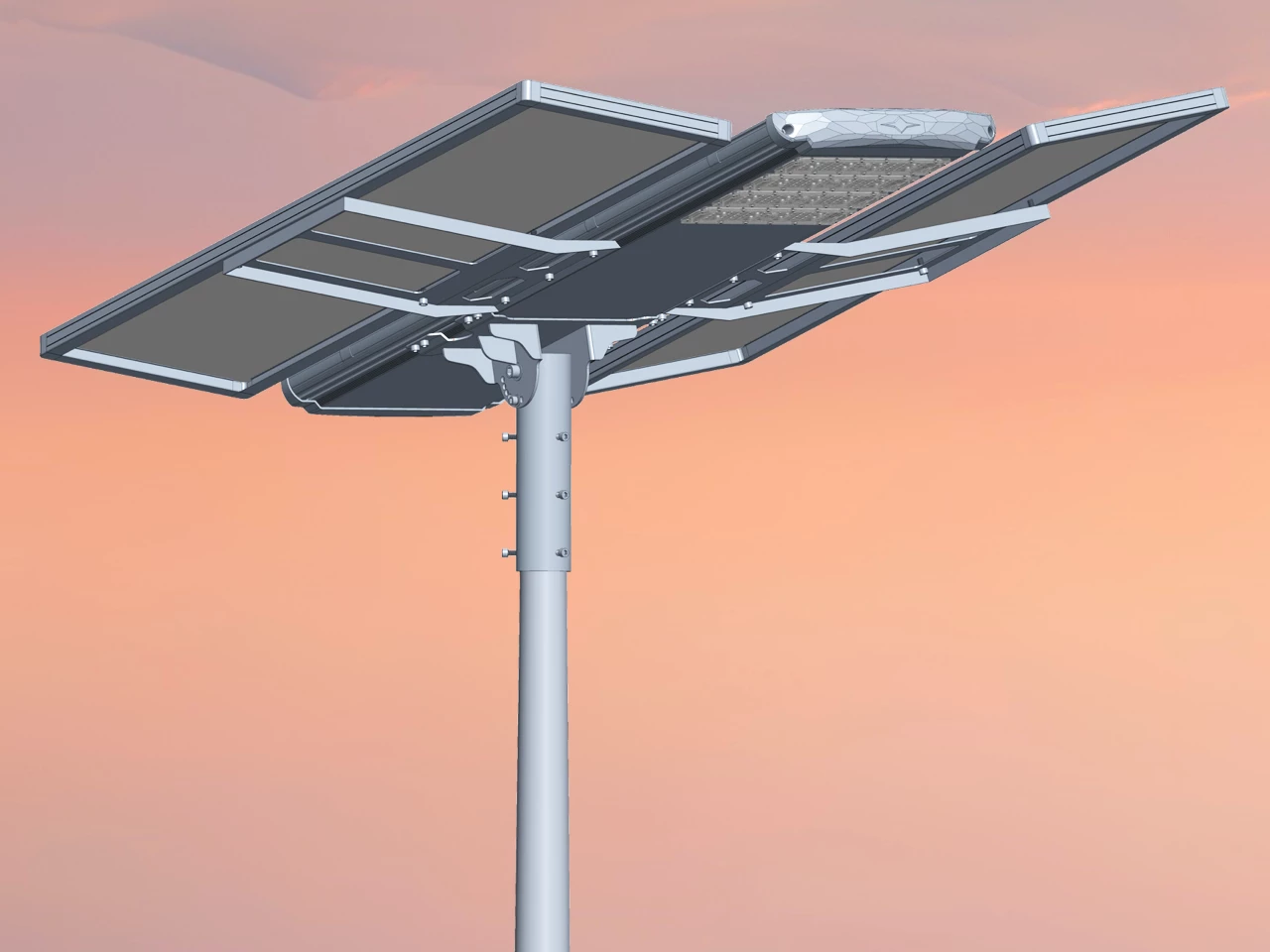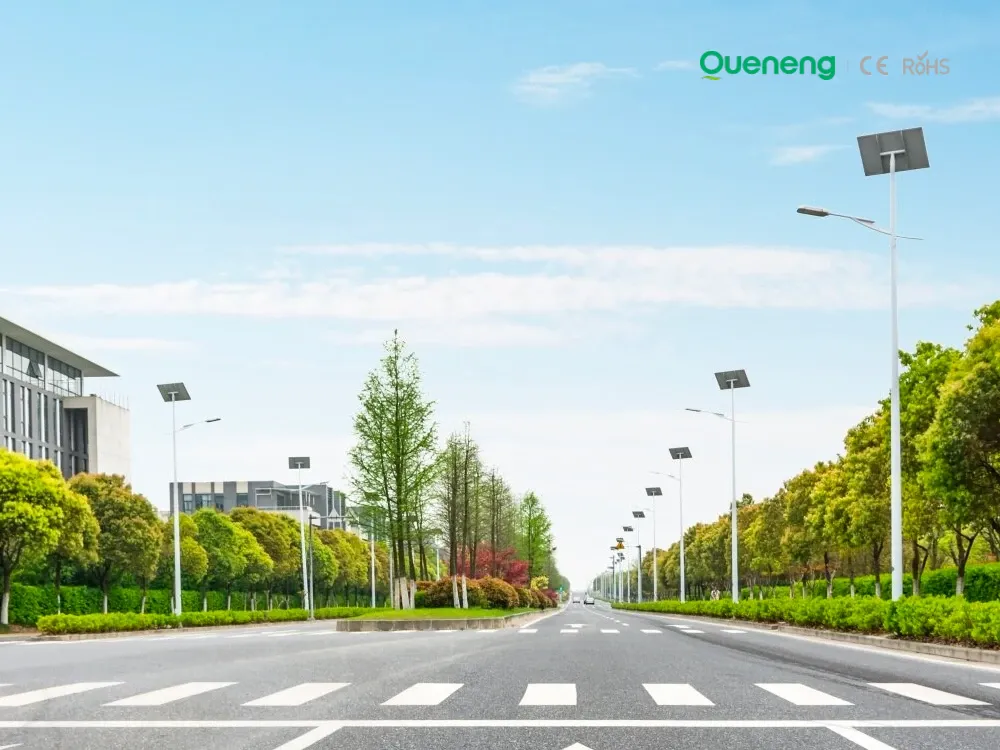Average and Minimum Maintained Illuminance Levels on Road Surfaces: Standards & Best Practices
Discover the standard illuminance levels required for road lighting, including average and minimum maintained lux values. Learn how they affect safety, visibility, and solar street light design.
Illuminance levels are a key factor in road safety, driver visibility, and overall lighting system performance. In the field of solar-powered street lighting, understanding average and minimum maintained illuminance levels helps engineers, developers, and city planners meet international safety standards and ensure energy-efficient lighting designs.

What Is Illuminance?
Illuminance is the amount of light (measured in lux) that falls on a surface. In road lighting, it refers to how brightly the road is lit, affecting visibility for vehicles, cyclists, and pedestrians.
Standard Illuminance Values for Road Lighting
International lighting standards such as EN 13201 (Europe) and IES RP-8 (North America) define recommended illuminance levels based on road type, traffic volume, vehicle speed, and pedestrian activity.
| Road Type | Average Illuminance (Eavg) | Minimum Illuminance (Emin) | Uniformity (Emin / Eavg) |
|---|---|---|---|
| Expressways / Major Roads | 20–30 lux | ≥ 7.5 lux | ≥ 0.25 |
| Collector Roads / Suburban Roads | 10–20 lux | ≥ 5 lux | ≥ 0.3 |
| Residential Streets / Local Roads | 5–10 lux | ≥ 2 lux | ≥ 0.35 |
| Pedestrian / Bicycle Paths | 2–5 lux | ≥ 1 lux | ≥ 0.4 |
Note: Exact requirements may vary depending on local standards and lighting classes (e.g., ME1–ME6 in EN 13201).
Why Are Maintained Illuminance Levels Important?
“Maintained” illuminance refers to the lighting level remaining after depreciation from factors like aging, dust, and dirt. Designing for these levels ensures consistent safety and visibility throughout the system’s lifecycle.
How Queneng Ensures Compliance with Lighting Standards
GuangDong Queneng Lighting Technology Co., Ltd. delivers solar street lighting solutions that comply with global standards. We provide:
- ✅ Customized lighting simulations based on road width, pole height, and traffic level
- ✅ High-efficiency LED optics for wide and even light distribution
- ✅ Long-lasting brightness using LM-80 certified LEDs and smart dimming
- ✅ Engineering support for photometric design and system optimization
Frequently Asked Questions (FAQ)
- Q1: What is the difference between average and minimum illuminance?
- A1: Average illuminance is the mean value across the entire surface, while minimum illuminance refers to the darkest measured point.
- Q2: Why is lighting uniformity important?
- A2: High uniformity reduces dark patches and glare, enhancing visibility and visual comfort.
- Q3: Can solar street lights meet these illuminance levels?
- A3: Yes. With proper design, solar lights from Queneng can meet or exceed EN 13201 and IES RP-8 standards.
- Q4: What factors affect road surface illuminance?
- A4: Key factors include pole height, lamp wattage, lens optics, pole spacing, and the road surface reflectance.
- Q5: How often should road lighting be audited?
- A5: Every 2–3 years, or when structural or environmental changes (like tree growth) occur near the lighting area.
-

Conclusion
Understanding average and minimum maintained illuminance is critical to designing safe and efficient lighting systems. At GuangDong Queneng Lighting Technology Co., Ltd., we deliver smart solar lighting solutions that ensure proper lighting levels in compliance with international standards.
For custom lighting designs, simulation support, or project consultation, contact our team today.

Have more questions about our products or services?
The latest hot news you might like

Discover how solar panels power street lights, exploring the technology behind solar energy conversion, storage systems, and how solar-powered street lights are revolutionizing urban and rural lighting solutions.

Learn how AC Solar Hybrid Street Lights work, their advantages, disadvantages, system behavior in low-sunlight conditions, and why hybrid technology is ideal for regions with unstable sunlight.

Municipalities around the world are increasingly adopting solar-powered streetlights as part of their urban development strategies. Rising energy costs, the need for sustainable infrastructure, and government green initiatives are driving cities to switch from traditional street lighting to advanced LED solar streetlights.
Queneng Lighting provides municipalities with cost-effective, energy-efficient, and durable solar lighting solutions, ensuring safe and sustainable public spaces.

In recent years, the purchase of solar streetlights for municipalities has become a growing trend across the globe. Local governments are under pressure to reduce public expenditure, promote green energy, and create safer communities. Solar streetlights provide a reliable, cost-effective, and sustainable solution that meets these needs. Queneng Lighting, as a leading solar street lighting manufacturer, has supported multiple municipal projects worldwide with customized and energy-efficient solutions.
FAQ
Schools and Educational Institutions
What kind of maintenance is needed for solar lights?
The main maintenance required is cleaning the solar panels periodically to ensure they remain free of dust or debris, and occasionally checking the functionality of the battery and light.
Solar Street Light Luda
What makes Luda solar street lights high-efficiency and eco-friendly?
Luda solar street lights feature high-efficiency solar panels that maximize energy conversion even in low sunlight conditions, ensuring optimal performance throughout the day. The use of energy-efficient LED bulbs minimizes electricity consumption while delivering bright, reliable illumination. This combination of features reduces the overall carbon footprint and makes them an eco-friendly choice for outdoor lighting.
Solar Street Light Luan
How bright are Luan solar street lights compared to traditional street lights?
Luan solar street lights offer brightness comparable to or greater than traditional street lights, using far less energy. The LEDs are designed to provide high-quality, focused illumination, enhancing visibility and safety in outdoor areas while saving energy.
What is the lifespan of Luan solar street lights?
Luan solar street lights have an impressive lifespan. The LEDs can last up to 50,000 hours, and the solar panels can perform efficiently for 25 years or more. The batteries typically last 3 to 5 years, depending on usage and environmental conditions, ensuring long-term value.
Battery Performance and Testing
What is the internal resistance in charging state and what is the difference between internal resistance in discharging state?
Industry
Will the solar street lights work effectively in winter or during low sunlight conditions?
Queneng’s solar lights are equipped with high-capacity batteries, ensuring normal illumination even in low-light conditions, making them ideal for regions with frequent winter or rainy weather.

If you would like more information about Queneng solar lighting solutions, please send us a message by filling out the form below. Our professional team will get back to you within 24 hours!
Rest assured that your privacy is important to us, and all information provided will be handled with the utmost confidentiality.
Schedule a Meeting

Book a date and time that is convenient for you and conduct the session in advance.
Have more questions about our products or services?





















